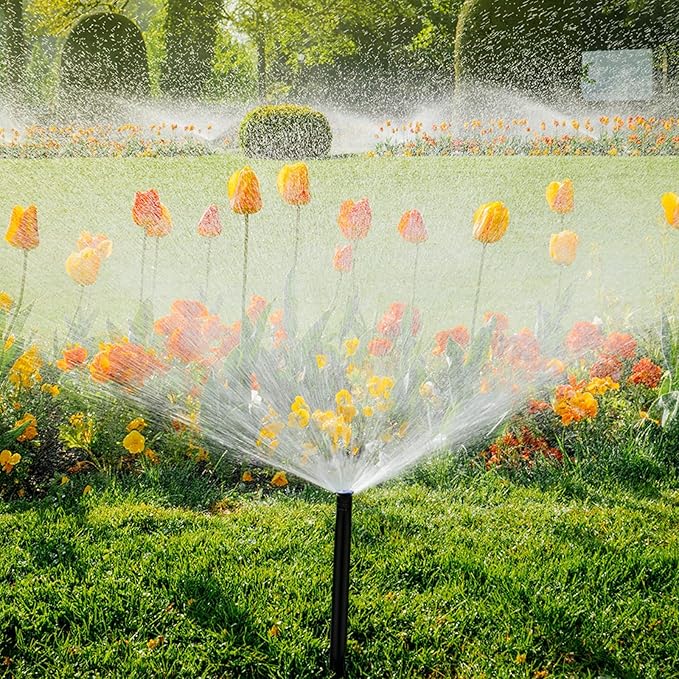
How to Create a Low-Maintenance Backyard Garden That Thrives Year-Round
Share
Maintaining a lush, vibrant garden can be a daunting task, especially for those with busy lifestyles or limited time to dedicate to regular gardening chores. However, with the right approach, it's possible to create a backyard oasis that requires minimal effort while still providing year-round beauty and enjoyment.
In this blog post, we'll explore the secrets to building a low-maintenance garden that thrives effortlessly, no matter the season. Whether you're a seasoned green thumb or a beginner gardener, these strategies will help you transform your outdoor space into a true haven.
Challenges of Maintaining a Garden
Keeping a garden healthy and visually appealing can be a constant battle. From weeding and watering to pruning and pest control, the list of tasks can quickly become overwhelming. Many homeowners find themselves struggling to keep up with the demands of a traditional garden, often leading to frustration and a sense of defeat.
Benefits of a Low-Maintenance Backyard Garden
The good news is that there's a better way. By embracing a low-maintenance gardening approach, you can enjoy all the benefits of a beautiful outdoor space without the constant upkeep. A well-designed, low-maintenance garden offers several advantages:
- Reduced time and effort required for maintenance
- Lower water and resource consumption
- Fewer pest and disease problems
- Increased resilience to environmental stresses
- Year-round visual interest and curb appeal
Overview of Year-Round Gardening Strategy
The key to creating a low-maintenance backyard garden is to adopt a holistic, year-round approach. Instead of focusing on seasonal plantings and high-maintenance annuals, we'll concentrate on selecting hardy, drought-resistant perennials and native species that thrive with minimal intervention.
By carefully planning your garden layout, choosing the right plants, and implementing smart maintenance techniques, you can create an outdoor oasis that requires little more than occasional pruning, weeding, and watering. Let's dive into the details and explore how you can transform your backyard into a thriving, low-maintenance haven.
Planning Your Low-Maintenance Garden
Assessing Your Space and Climate
The first step in creating a low-maintenance garden is to thoroughly assess your outdoor space and local climate. Consider factors such as:
- Sun exposure (full sun, partial shade, or full shade)
- Soil type and drainage
- Microclimates within your yard
- Average rainfall and temperature ranges
Understanding the unique characteristics of your garden will help you make informed decisions about plant selection and design.
Selecting the Right Location
Choosing the right location for your garden is crucial. Opt for an area that receives the appropriate amount of sunlight for your chosen plants, and ensure there's adequate drainage to prevent waterlogging. Avoid areas with heavy foot traffic or near large trees, as their roots can compete for resources.
Soil Preparation and Improvement
Healthy soil is the foundation of a thriving garden. Take the time to amend your soil with organic matter, such as compost or well-rotted manure, to improve its structure and nutrient content. This will help your plants establish deep, robust root systems and better withstand environmental stresses.
Choosing Year-Round Plants
Perennial Plants That Thrive in Different Seasons
One of the keys to a low-maintenance garden is selecting perennial plants that offer visual interest and functionality throughout the year. Look for species that bloom at different times, have attractive foliage, or provide year-round structure and texture.
Native Plant Selections
Incorporating native plants into your garden is an excellent way to create a low-maintenance, sustainable landscape. Native species are well-adapted to your local climate and soil conditions, requiring less water, fertilizer, and pest control than non-native varieties.
Drought-Resistant and Hardy Plant Varieties
Choosing drought-resistant and hardy plant varieties is crucial for a low-maintenance garden. These plants are better equipped to withstand environmental stresses, such as periods of drought, extreme temperatures, and pests, reducing the need for constant intervention.
Smart Garden Design Techniques
Xeriscaping Principles
Xeriscaping is a landscape design approach that emphasizes the use of drought-tolerant plants and water-conserving techniques. By incorporating xeriscaping principles, you can create a visually stunning garden that requires minimal watering and maintenance.
Mulching and Ground Cover Strategies
Applying a thick layer of organic mulch around your plants can help retain soil moisture, suppress weed growth, and improve soil health over time. Additionally, using ground cover plants can help reduce the need for weeding and provide a lush, low-maintenance carpet for your garden.
Efficient Irrigation Methods
Investing in an efficient irrigation system, such as drip or soaker hoses, can significantly reduce water consumption and the time required for manual watering. These systems deliver water directly to the root zone, minimizing evaporation and ensuring your plants receive the moisture they need.
Easy Maintenance Tips
Minimal Pruning Techniques
Opt for low-maintenance pruning techniques, such as deadheading spent flowers or removing damaged or diseased foliage. Avoid excessive pruning, which can stress your plants and create more work in the long run.
Natural Pest Control Solutions
Embrace natural pest control methods, such as introducing beneficial insects, using organic repellents, or implementing physical barriers, to manage pests without the need for harsh chemicals.
Seasonal Care Schedule
Develop a simple, seasonal care schedule to ensure your garden receives the attention it needs without becoming a time-consuming chore. This may include tasks like mulching, weeding, and occasional watering during dry spells.
Cost-Effective Landscaping Ideas
Budget-Friendly Plant Selections
When building a low-maintenance garden, focus on cost-effective plant selections that provide maximum impact with minimal effort. Many native and drought-resistant species can be found at local nurseries or through seed-sharing programs, allowing you to create a beautiful garden on a budget.
DIY Garden Design Elements
Incorporate DIY garden design elements, such as simple raised beds, stone pathways, or repurposed containers, to add visual interest and functionality to your outdoor space without breaking the bank.
Long-Term Cost Savings
While the initial investment in a low-maintenance garden may be higher than a traditional high-maintenance approach, the long-term cost savings can be significant. Reduced water usage, fewer inputs (such as fertilizers and pesticides), and less time spent on maintenance can all contribute to substantial savings over time.
Conclusion
Creating a low-maintenance backyard garden that thrives year-round is an achievable goal, even for busy homeowners. By carefully planning your garden, selecting the right plants, and implementing smart design techniques, you can transform your outdoor space into a lush, resilient oasis that requires minimal effort to maintain.
Remember, the key to success lies in embracing a holistic, year-round approach to gardening. With a little upfront planning and the right strategies, you can enjoy the beauty and serenity of a thriving garden without the constant demands of high-maintenance landscaping. So, what are you waiting for? Start planning your low-maintenance backyard garden today and reap the rewards for years to come!
